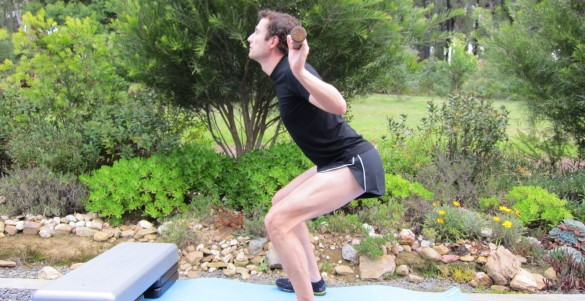
Most people think that running speed is improved by focusing on running training only. But, it is not true. If you are a basketball player, a cricketer, a football player, a distance runner, a sprinter or anyone else, who wants long and fast running, then squatting exercises are the best workout for you. They really help in strengthening lower body muscles. Several variations with the bar and dumbbells can make your upper body stronger. Here are few types of squats that aim on strengthening the body of runners for faster running.
Split squat
Split squat is also called as the Bulgarian split squat. Primarily, it targets quadriceps, calves, hamstrings and glutes. It helps in strengthening your legs to improving running speed. It can be performed similarly as the single leg squat with non working leg behind on the table and standing leg on the surface. It is an excellent exercise for those who are weaker in single leg as it works on both legs separately.
To begin performing split squat, take barbell or dumbbells in both hands (beginners can also perform it without dumbbells or single dumbbell). Now, place your left foot on a bench. Bend your right (standing) leg till your knee makes a 90 degree angle while keeping the body weight on the same leg. Then, push up yourself using your glutes. It will be a great exercise that can be included in other squat movements. Repeat it in two to three sets with 8 to 10 reps in every set. It will improve flexibility in hip flexors that will allow faster running by lengthening your stride.
Runner’s squat
Runner’s squat is one of the commonly preferred exercises by the runners. It is effective in strengthening butt, shoulders and legs. Begin with holding three to five pound dumbbells in both hands. Stand tall in the position with feet distance equivalent to hip width. Now, lift your right heel behind you and bend both elbows at 90 degree angle. Then, bend left into the squat position and at the same time, bend left arm backward and right arm forward. For beginners, you can touch your back toes to surface making it a bit easier.
Now, repeat all previous steps while switching sides and bending right leg. Continue all the steps with alternative legs. It will look like you are running in a slow motion. Repeat it in two to three sets with 10 to 20 reps in every set. You can also perform it without dumbbells or dumbbell in single hand only.
Single leg squat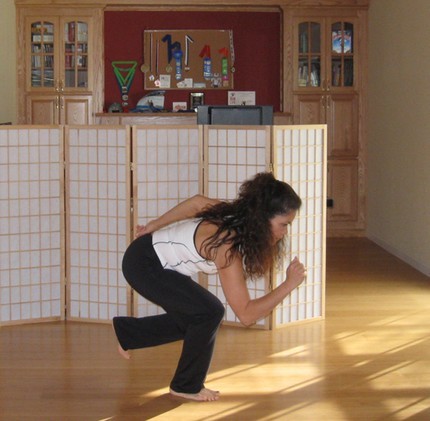
Single leg squat is particularly applicable for runners. It targets gluteus, quadriceps, core muscles and hamstrings. It helps in developing more symmetrical leg strength and balance. Begin with standing straight and shifting body weight of the right (standing) foot. Take your left foot behind in the air at around 30 degrees angle. Maintain neutral spine position and do not curve or arch your back. Keep your right arm forward with bent elbow. Repeat all the previous steps while switching foot. Repeat it in three to eight sets with eight reps in every set.
Wide stance turned out squat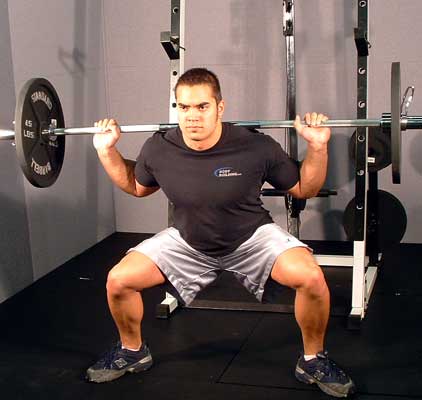
This type of squat mainly focuses on the inner thigh muscles. It also place stress on outer quad. In this squat, you have to maintain an upright position that lowers the stress placed on the lower back.
While performing wide stance turned out squat, you have to place you legs a little bit wider than your shoulder width and keep your toes in outward direction. Keep the bar on the shoulders and grip it with your hands in a wider range. Now, sink into the squat position by bending your knees and keeping your head up. Try to bend your knees in a little outward direction above your toes. Squat down as low as you can. Anyhow, you cannot go as low as you can with power squat or Olympic squat.
You can perform additional squat movements with wide stance-turned out squat because it is less intense than other movements. Repeat it in two to three sets with 6 to 10 reps in every set.
Jump squat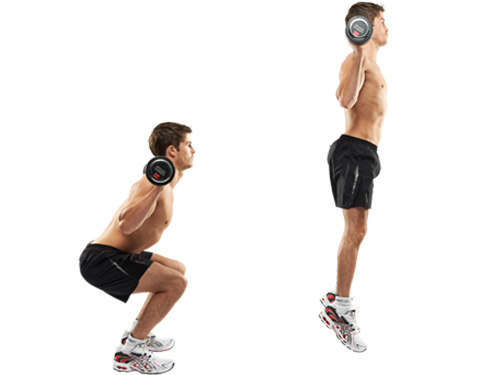
Jump squat is a proved exercise for faster running and vertical jump. Begin with placing your hands behind your head and keep your elbows outward. Keep the distance between your feet equivalent to hip width apart. Now, lower down your body by bending your knees and hips. Try to make them parallel to the floor. Then, jump up as high as possible and immediately come down for the next repeat. Be careful while coming down safely by absorbing impact with hips, ankles, and knees. Repeat it in two to three sets with 6 to 10 reps in every set. You can also perform it with dumbbells or bar to increase its intensity.
Pistol squat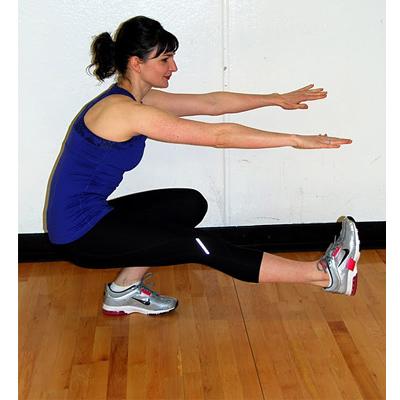
Numerous people wondered regarding how to perform pistol squat, especially where to start. It is very easy to perform this squat form for beginners. Here are few steps that will take you from the beginning to the advance level of pistol squat.
Pistol squat is meant for relatively advanced or strong individuals. For beginners, it is highly recommend using a bench for the support. Therefore, set a bench behind you and stand on single leg with other leg in the air making around 30 degrees angle. Also, keep your arms at your front and sit back on the bench and then come back to the initial position. In the beginning, you should practice pistol squat in this way.
Now, if you want to move to a difficult variation, then remove the bench and perform in the same manner as previously. Make sure, that your elevated heel does not touch the ground. You can also increase the degree between standing foot and elevated foot to increase difficulty level. Try to repeat it as many times as you can do without losing the balance. It is a difficult squat but really effective for runners.
Barbell squat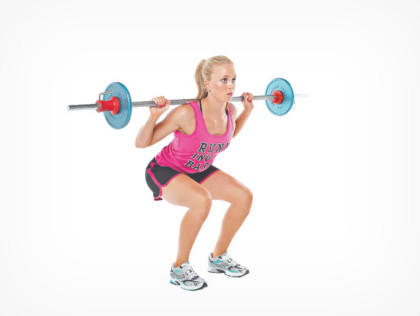
Barbell squat is an effective exercise for runners because it works not only on your soleus muscles or calves, but also on your quadriceps. According to research, performing barbell squat is highly beneficial for athletes and runners. It is advisable to perform this exercise with squat rack for safety issues.
Begin with holding bar at your back shoulders. Maintain a distance equivalent to shoulder width between both feet and toes pointing outward. Now, lower down the bar while bending the hips and knees up to straight position with head up. Try to bend as much as possible, that is a bit less than 90 degree angle between upper legs and calves. Then, come back to the original position while exhaling and pushing the surface with heel. Repeat it in two to three sets with 8 to 10 reps in every set.
Front squat
Front squat requires holding the bar at the front of the body. It is quite better than back squat for runners as it helps in building tremendous strength in core of the body. It mainly targets the quads and gives lesser pressure to the lower back. It is really effective for those runners who have issues related to their back.
Start with resting the bar on the front shoulders and feet distance equivalent to the shoulder width apart. Keep your toes outward at a 45 degree angle as it will distribute body weight on the base. Now, grip the bar with the fingertips and keep your elbows pointing forward. You should keep your core braced throughout and back upright. Keep looking in the forward direction. Now, perform squat while keeping knees in line and elbows as high as possible. During the squats, lower down your body till they come parallel to the surface. Repeat it in three to five sets with eight reps in every set.
Power squat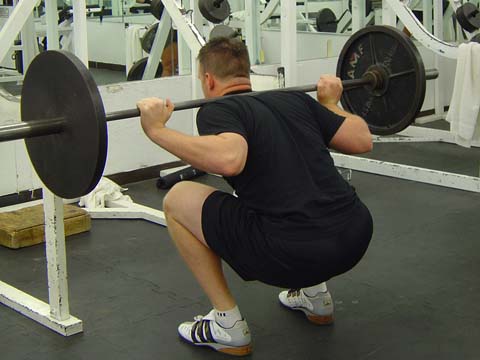
The prime targets of power squat are hamstring muscles and glutes. Usually, people can lift more weight during working out with power squat that makes it ideal for maximizing leg development. It requires slighter angle between upper and lower body, unlike traditional squat. To target more on glutes, you need to lean forward and switch more weight backward. While performing this position, the bar should be place at the upper portion of shoulders. Usually, people prefer a narrower grip of hands, but it is a personal choice. Keep your head upward while chest out and shoulders back. It will help in keeping the back straight that will prevent injuries. You can perform squat with using both wide stance and narrow stance, but again it is a personal choice.
Maintaining the right balance and form are the most important things. Your toes should be at 45 degree angle. This will help in distributing your body weight. Repeat it in four to five sets with three to six reps in every set.


